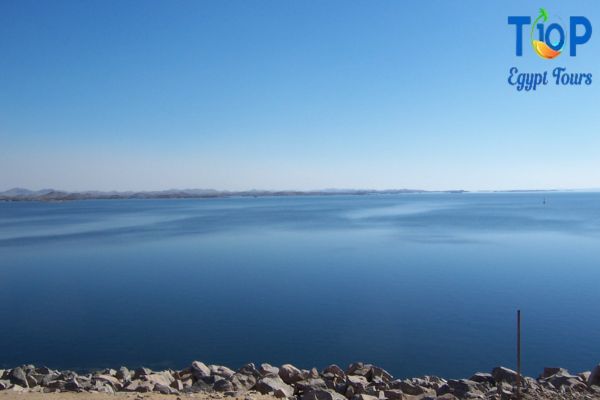Lake Nasser is the largest artificial lake in Africa and the second-largest artificial freshwater lake in the world. It is located on the Nile River, between Egypt and Sudan. The lake was created by the construction of the Aswan High Dam in the 1960s.
It is a vast and beautiful lake. It is over 500 kilometers long and 32 kilometers wide at its widest point. The lake is home to a variety of wildlife, including crocodiles, hippos, and birds.
In this article, we will uncover for you the Lake Nasser with Top Ten Egypt
Architectural Splendor Of Lake Nasser:
It is not home to any architectural structures in the traditional sense. However, the lake itself is a marvel of engineering. The Aswan High Dam, which created Lake Nasser, is one of the largest dams in the world.
The lake is also home to several ancient Egyptian temples that were relocated to higher ground to avoid being submerged by the lake. These temples include Abu Simbel, Philae, and Kalabsha.
Historical Significance:
Lake Nasser has a significant historical and cultural impact. The lake has helped to improve Egypt’s water supply and agriculture. The lake has also created a new transportation route and a popular tourist destination.
The lake has also had a significant impact on the Nubian people, who were forced to relocate when their land was flooded by the lake. However, the Nubian people have preserved their culture and way of life, and they continue to live in villages along the shores of Lake Nasser.
Cultural Heritage Preservation:
Lake Nasser is home to several significant cultural heritage assets, including the ancient Egyptian temples that were relocated to higher ground to avoid being submerged by the lake.
The Egyptian government has taken steps to preserve these cultural heritage assets. The temples have been carefully restored and maintained, and they are now popular tourist destinations.
The Nubian people’s culture and way of life are also important cultural heritage assets. The Egyptian government has taken steps to support the Nubian people and to preserve their culture.
Artistic Treasures:
Lake Nasser, Nubian, Aswan is home to several artistic treasures, including the ancient Egyptian temples that were relocated to higher ground to avoid being submerged by the lake. These temples are adorned with beautiful reliefs and hieroglyphics.
The Nubian people are also skilled artisans. They produce a variety of handicrafts, including pottery, textiles, and jewelry.
Cultural Experience and Connection:
A visit to Lake Nasser, Nubian, and Aswan offers visitors a unique opportunity to experience the natural beauty of Egypt and to learn about its rich history and culture. Visitors can visit the ancient Egyptian temples, take a boat trip on the lake, and meet the Nubian people.
Visitors can also learn about the challenges of water management in arid regions and the importance of international cooperation in preserving cultural heritage.
Lake Nasser, Nubian, Aswan is a must-see for any visitor to Egypt. It is a vast and beautiful lake that is home to a variety of natural and cultural treasures. Visitors to Lake Nasser can experience the natural beauty of Egypt, learn about its rich history and culture, and meet the Nubian people.



Comment (0)